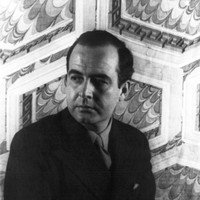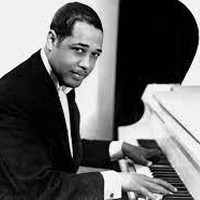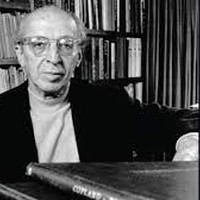Copland’s Appalachian Spring



A child prodigy from a musical family, Samuel Barber enrolled in the founding class at Philadelphia’s Curtis Institute of Music at the age of 14. He went on to win the American Academy’s Rome Prize, which bankrolled his Italian residency from 1935 to 1937. During that time, Barber composed his String Quartet (Opus 11) as well as an adaptation for string orchestra of the quartet’s slow movement. It was that Adagio for Strings that launched Barber’s international career when Arturo Toscanini conducted it on a radio broadcast in 1938.
Anyone familiar with the mournful tropes and ancient modes of Barber’s signature work will recognize a family resemblance with his very last composition, the Canzonetta for oboe and strings. Barber had accepted a commission for a concerto from the New York Philharmonic to feature their longtime principal oboe, Harold Gomberg, but a series of hospitalizations for cancer treatment prevented the composer from completing the task. He narrowed his plan to focus just on a slow movement, and before he died, he got far enough that his publisher was able to hire Barber’s only student, Charles Turner, to complete and orchestrate the work based on indications in the manuscript.
Aaron Grad ©2021


Valerie Coleman was named Performance Today’s 2020 Classical Woman of the Year, validating her immense contributions as a composer, performer and educator in American music. As the founder and longtime flutist of Imani Winds, Coleman has made a lasting imprint on the modern wind quintet repertoire, including this work that Imani Winds recorded on their 2016 album Startin’ Sumthin’. The composer wrote the following description.
"Red Clay is short work that combines the traditional idea of musical scherzo with living in the South. It references the background of my mother's side of the family that hails from the Mississippi delta region. From the juke joints and casino boats that line the Mississippi river, to the skin tone of kinfolk in the area: a dark skin that looks like it came directly from the red clay.
The solo lines are instilled with personality, meant to capture the listener’s attention as they wail with “bluesy” riffs that are accompanied (‘comped’) by the rest of the ensemble. The result is a virtuosic chamber work that merges classical technique and orchestration with the blues dialect and charm of the south."
–Valerie Coleman
Aaron Grad ©2021
 Watch Video
Watch Video
In 1926, American composer Ruth Crawford Seeger won a scholarship in composition from the Institute of Musical art, which had just been taken over by the Juilliard Musical Foundation. With her application for the scholarship, she submitted two samples of her work: the Sonata for Violin and Piano and Music for Small Orchestra. According to Crawford’s records, Music for Small Orchestra was not performed during her lifetime; the premiere was in 1969 at West Texas State University.
Music for Small Orchestra is the first of three orchestral works in Crawford’s compositional output. The piece is uniquely scored for flute, clarinet, bassoon, four individual violin parts, two individual cello parts, and piano. Crawford experiments with simultaneously using high and low instruments in the extremes of their registers throughout the two-movement suite. For example, the bassoon will play high pitches sounding above low sonorities on the flute, and the cellos sometimes play higher than the violins. Additionally, there is very little instrumental doubling in the piece. As such, when the four violins and cellos have a solo melody in unison, it creates a powerful musical moment.
One of the most significant compositional features of Music for Small Orchestra is Crawford’s use of ostinatos, which are repeated musical patterns. In the first movement, multiple ostinatos are layered on top of each other, creating a dense texture. Often, this layering results in extraordinary polyrhythmic complexity between each part and a thick veil of sound. These ostinatos are usually harmonically unrelated as well, further contributing to the intensity.
The second movement also uses ostinatos, although there is a more pronounced distinction between the free, rhapsodic melody of the theme and the repetitive underlying ostinatos. Marked as “In roguish humor. Not fast,” this movement exhibits many of the joke-like qualities of a scherzo. There is perpetual motion, and duple rhythms in the accompanying ostinatos are layered with triple rhythmic figures in the soaring theme.
Music for Small Orchestra is one of Crawford’s earliest works, and it demonstrates many of the artistic priorities and compositional techniques that would become integral to her later pieces. These include the use of quartal and quintal harmonies infused with the dissonant tritone, counterpoint centered around intervallic patterns, and the use of rhythm as a structural parameter.
Paula Maust ©2022

Get driving directions and find nearby parking.
Find dining options close to the venue.
View seating charts to find out where you'll be seating.
SPCO concerts are made possible by audience contributions.
For exclusive discounts, behind-the-scenes info, and more:
Sign up for our email club!
